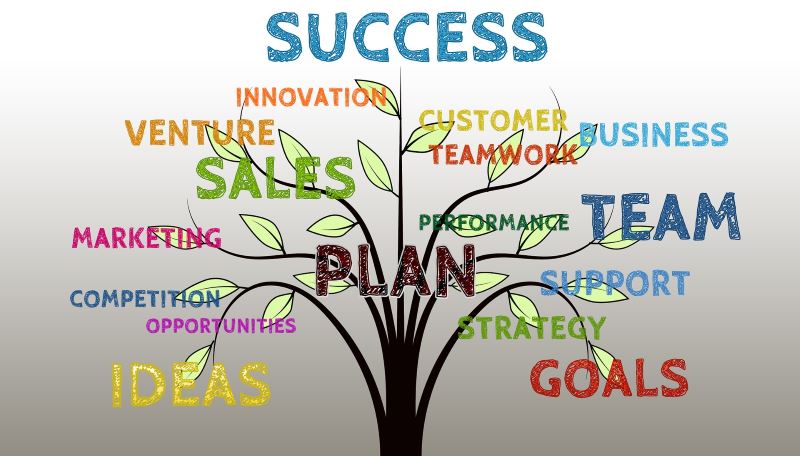Digital transformation has an obvious impact on overall business performance. This article reviews some key themes (business model, organization, change management) to address the transformation.
In 2012, a study from MIT Sloan Research taught us that companies reaching their digital maturity were 26% more profitable than their peers. In 2014, McKinsey estimated that digital transformation could have an impact of -20% to + 40% on the operating income of a business, according to the quality of its implementation. Illustrating the challenge represented by the transformation for the competitiveness of businesses, these figures show the engagement of a Darwinian process which can’t be ignored.
To lead this transformation, a new “C Level” appeared in the organization the Chief Digital Officer. The Chief Digital Officer is in charge of decompartmentalizing the company, allowing it to adopt new models. With digital no longer being a matter of “agency”, the traditional models of business organization as taught in business schools for 50 years began to change. To borrow the expression of the Nora-Minc’s french public report (1978), it “takes the entire company in its nets.” As a result, the business model, business processes, and the culture of the company must be rethought.

The model change
“Our competitors aren’t taking our market share with devices; they are taking our market share with an entire ecosystem.” Nokia CEO Stephen Elop, 2011
The value chain described by Michael Porter analyses the company through its ability to control linearly a set of activities to deliver an offer. The value chain moves now into an ecosystem that is characterized by the ability to develop and facilitate interactions between entities.
The offer is becoming a platform. This platform may be a range of connected devices (Internet of Things), or a pure player ensuring the linkage between users (producers and / or consumers). In its most complete version, the business model transformation gives rise to the economy of platforms and “uberization” that when it comes to infiltrate a sector, it doesn’t let it stay intact.
The dynamics of these models is based on network effects. The value of the platform comes from its ability to connect a large number of users. The company is no longer limited to extract value by addressing the individual consumer, but from the development and operation of an ecosystem that generates its own value. For example, a carpooling website, bringing together hundreds of users, it will offer a relatively limited service. From the moment it collects millions of users, it can compete with traditional operators offering a service based on the exploitation of a heavy infrastructure.
The Datafication
This reconfiguration of the value chain affects profoundly the organization of the company, whose performance will be subject to its ability to rethink its business processes. With the Datafication, the value moves to the data.

The technologies allow at the same time to build systems of exchanges and data recordings, and to analyze data with a new level of granularity to extract value. This new dimension of the organization requires governance and management models, more “data-driven” and open to change, for the management of operations (see “Industry 4.0”) and innovation.
The ability of the company to produce and control data redefines its value proposition. The insurance market is emblematic of this change. A contract customization is enabled by the operation of multiple data sources. The implementation of sensors in automobiles to analyze driver behavior adds interactivity in the costumer-insurance company relationship.
The transformation by “small touches”
Beyond the transformation of major models that structure the business, the digital economy gives rise to a new ecosystem of solutions bringing “plug and play” innovation to the company. Commercialized solutions in SaaS mode, immediately available and addressing a variety of functions in the organization, boost company performance.
Thus, marketing automation solutions, real-time and mass customization allow the gradual extension of marketing to the entire customer experience. The way companies market their offers change, giving a competitive advantage to those who make the best implementation.
If these solutions allow to match the pace of accelerated competitive environment, the challenge for the company is to have a sufficiently flexible organization that can easily implement these solutions and naturally adapt its processes.
Innovation sets the pace for business competitiveness
These transformations of the company’s strategy, the organization and the competitive environment involve a strong change in the conduct of operations, management methods and working habits. The avalanche of innovation, which is not limited to the technical area, sets the pace for business competitiveness and requires flexible and agile implementation processes.
In this context, the failure must be considered as a component of success ( “Fail fast. Succeed faster.”). The work and collaboration patterns are changing. The company is decompartmentalized because the time belongs to the fast-movers, according the new adage: “it is not the big that eat the small, it’s the fast that eat the slow.”
With digital business, the competitiveness intensity has increased strongly. Industries, deeply anchored in their market, have discovered a versatile consumer. Paradoxically, the new models which have emerged are less subject to direct competition. A product or a production process can be copied. It is more difficult to reproduce an ecosystem in its entirety.
The challenge for companies is to set the course that leads them to their new model, based on an organization that is more a catalyst than a barrier to change.
















Your email address is only used by Business & Decision, the controller, to process your request and to send any Business & Decision communication related to your request only. Learn more about managing your data and your rights.